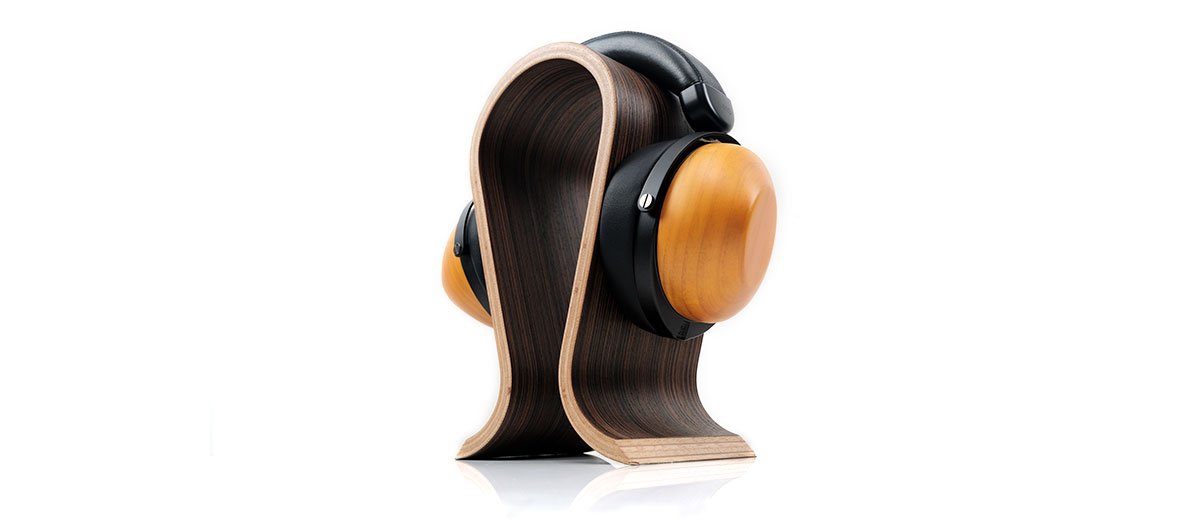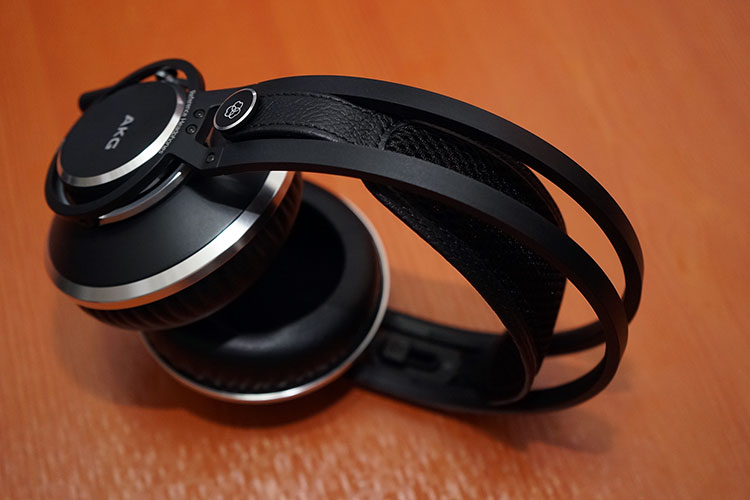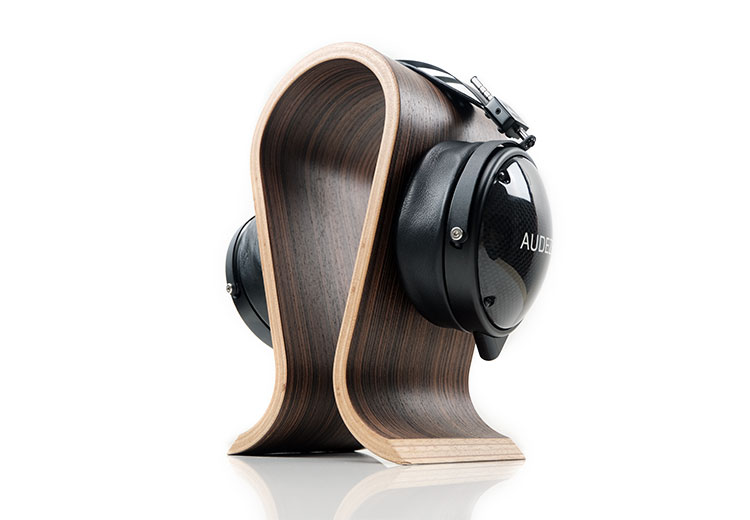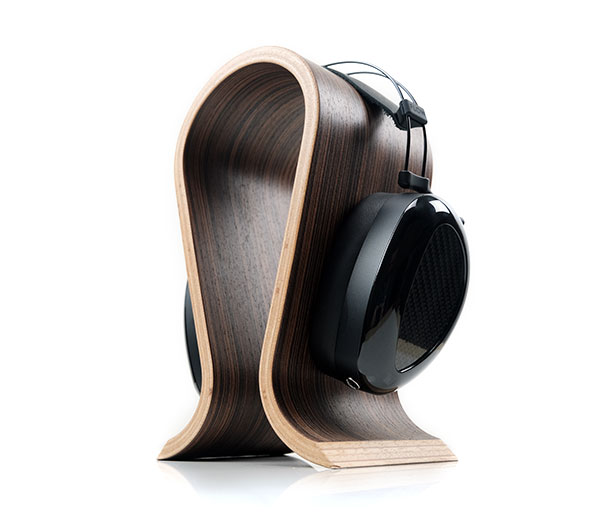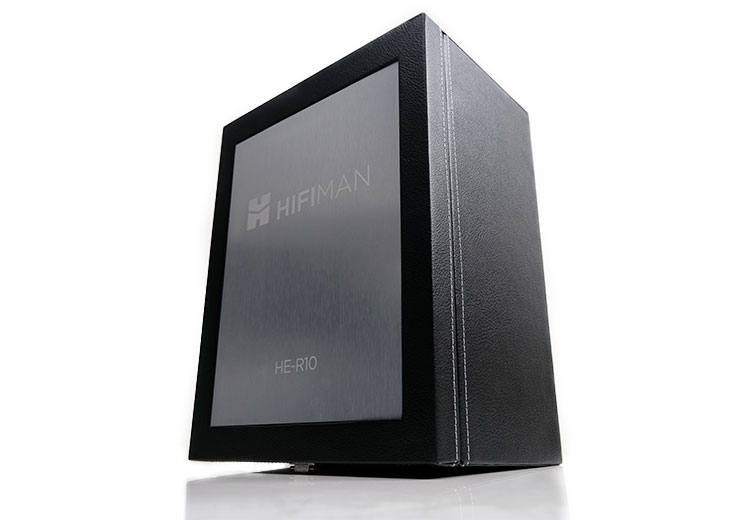Select Comparisons
AKG K872
$1499
Technical
The K872 is still to this day AKG’s flagship closed-back full-sized dynamic driver headphone with some design motifs that put some of today’s competitors to shame.
Internally, the K872 uses a 53mm dynamic driver with a two-layer, copper-covered aluminum voice coil coupled with some very strong high performing Tesla 1.5 magnets. The HE-R10D uses a slightly smaller 50mm dynamic driver with rare earth magnets combined with HIFIMAN’s unique Topology diaphragm.
Both headphones are fairly easy to drive with the K872 rated at 36Ω and the HE-R10D marginally lower at 32Ω. The rated SPL does have a slight difference with the HE-R10D requiring more current at 103dB compared to the K872 at 112dB.
In our real-world tests, I actually found the current gap to be more marginal than the paper stats would suggest. With the dCS Bartok, the HE-R10D did indeed sound slightly livelier at the same volume setting as the K872, but matching adjustments were minimal. In fact, with the impedance selector on the HA-2SF tube amp, I found the HE-R10D to be the more dynamic of the two.
The HE-R10D does also have the added advantage of coming with a balanced cable as stock whereas the 3-pin LEMO push-pull AK872 only comes with an SE terminated cable. You can get balanced these days for the K872 but it will set you back $100 upwards for a decent one.
Design
There are two aspects to these headphones that have one way ahead and the other more evenly balanced. The first is the quality of the materials used and overall form factor and that’s where the K872 has a considerable advantage.
Not that the wood cups of the HE-R10D lack visual appeal because they do, but rather the solidity of the K872 construction is incredibly good. The headband adjuster strap and pad leathers are real, the cardanic hinge is a refined metal that incorporates the entire headband, (plastic), and the silver ring accented plastic cups are blemish-free.
By contrast, the HE-R10D does have some sturdy CNC machines aluminum gimbals, and the leather headband strap is generous with the memory foam but those plastic pivot blocks seem out of place for me on a headphone at this price point.
The more even balanced aspect of their designs are comfort and isolation. I find the HE-R10D the more comfortable of the two headphones and it is indeed the lighter of the two by just over 50g.
The K872 has a good pressure distribution with the tensioner strap that some might prefer over the single band memory foam system of the HE-R10D. However, I find the comfort of the wedged pads on the HE-R10D better for longer listening periods and the relaxed clamping is more to my liking.
On the flip side, the inverted or hollow leather pads of the K872 are pure genius with much better passive isolation than the HE-R10D. The hybrid pads on the HE-R10D are rather more porous due to the polyester inners.
Performance
On a purely subjective basis, I find the HE-R10D offers the better PRaT of the two headphones. The K872 is perhaps a more coherent tuning and a little more precise and cleaner in the mids but it lacks the power and warmth of the HE-R10D low-end leaving it comparatively neutral sounding and lacking in a solid fundamental.
That tends to tip the timbre more to the cleaner and brighter side with just a small nudge in the mid-bass for comparative warmth and prevent it from sounding dry. The HE-R10D has a much better sub-bass extension, quantity, and mid-bass punch.
As a result, the HE-R10D low-end timbre is much warmer with more perceived power stretching the stage much deeper. The K872 bass is tighter and cleaner maybe but that lack of comparative weight robs it a little of presence leaving it to sound much flatter.
Both have tuning quirks through the mids. The HE-R10D female vocals lack a little body for me though not necessarily dipped. The K872 vocal is lighter in tone and cleaner but if they hit that 2-3k dip they can lack a little presence.
Instrumental timbre is more neutral and cleaner on the K872 whereas the HE-R10D up to around the 2-3k marker is more liquid in tone, warmer, and rounded. Beyond 2-3k you get a bit more contrast from the extended and elevated HE-R10D upper treble influence whereas the K872 is a bit more evenly tuned with a smooth gradual upper treble fade.
Audeze LCD-XC
$1299
Technical
The LCD-XC here is the new 2021 version which internally has a few tweaks and is also priced at the exact same price point as the HE-R10D. Both are full-sized circumaural headphones but internally they are hugely different.
The LCD-XC is a planar magnetic driver design whereas the HE-R10D is a dynamic driver implementation. Inside, the XC uses a 106mm ultra-thin planar diaphragm with a dual-sided Neodymium N50 proprietary magnet array.
The XC also comes with Fazor technology which helps guide the soundwaves in a smooth and controlled manner. This in turn improves phrase coherence and lowers potential ringing.
The HE-R10D uses a 50mm dynamic driver with a rare earth magnet array and HIFIMAN’s patented Topology diaphragm for fined-tuning control. A very different driver system and a very different type of response, (see below in performance).
The LCD-XC is rated at 20Ω and 100dB SPL which on paper compares favorably to the 32Ω and 103dB SPL rating of the HE-R10D. In our real-world testing condition on an impedance matched 32Ω 2W SE output from the Auris Audio HA-2SF, I felt the HE-R10D was the livelier of the two though volume adjustment upwards was very minor for the XC.
Design
The LCD-X has a better quality of materials used throughout, including carbon fiber, Noryl molding, and leather pads. However, the HE-R10D is by far the lighter and comfier of the two headphones when on the head. The LCD-XC weighs in at a massive 677g or just over double the weight of the HE-R10D’s at 337g.
Now I do have to say that Audeze has done some wonderful things to mitigate that weight but the difference between the two is immediately noticeable. You will find the HE-R10D much more amenable to longer listening sessions.
Nevertheless, the new leather headphone adjuster strap and very thick but soft wedged leather pads do an excellent job of balancing the pressure distribution on the LCD-XC. There is a bias still to the cups given the size and magnet location but the strap displaces the vertical pressure very nicely.
The HE-R10D’s pressure displacement is excellent and whilst the pads are as thick they do not need to be with a somewhat more relaxed clamp and vert little vertical or lateral pressure.
Performance
We will actually have a full review out on the XC in a few weeks but as of now, this is a fully burned-in unit. The biggest initial impression was that the midrange on the XC seems to stand out a lot more than the HE-R10D tuning.
In terms of staging, that means the aspects of the instrumental imaging on the XC are a little further in the background whereas elements of the HE-R10D such as the mid-bass, lower mids, and upper treble are more pronounced and forward sounding.
The XC does have a lift from the lower-mids from around 500Hz onwards which is classic Audeze tuning for me on the LCD range but it starts from a relatively controlled mid-to-upper bass so it does not sound as elevated and warm as the HE-R10D tuning.
The HE-R10D has a much stronger 500Hz to 1K bump which, combined with an elevated mid-bass presence delivers a punchier bass response. The LCD-XC extends beautifully and offers more sub-bass solidity and low-end clarity but beyond 70Hz it has that classic planar linear tuning so not as punchy.
The instrumental and male vocal timbre is to the softer and smoother side on the HE-R10D with a bit more treble contrast and energy creeping into the upper mids. Sibilance can creep into the HE-R10D’s female vocal range but it’s quite manageable.
The XC has a cleaner instrumental tone with better separation and less bass bloom. However, its 6-7k treble energy has less bass warmth to counter in its harmonic balance so the vocal timbre can sound cooler and drier overall.
Dan Clarke Audio AEON 2 Noire
$899
Technical
We just reviewed the AEON 2 Noire a few months ago and represents a new iteration of their closed-back AEON 2 series. Like the XC, this is a planar headphone as opposed to a dynamic driver design but this time it is a few bucks on the cheaper side of the HE-R10D.
Internally, the Noire has a 62mm x 34mm planar magnetic driver with a single-sided magnet array. They have also incorporated their V-Planar and TrueFLOW technology into the design which has a similar aim to Audeze’s Fazor in terms of soundwave management.
In this case, the magnet and FLOW structures are flipped 180 degrees from the original AEON series so they are now out of the direct signal path of the ear with a new damping driver design to improve resolution.
The HE-R10D’s dynamic driver implementation uses a rare earth implementation with what I believe to be a vented internal baffle to allow it to breathe into those huge acoustic chambers inside the cups.
The diaphragm is also their patented Topology design which allows HIFIMAN to further fine-tune the driver. It is also pitched as being able to eradicate or at least substantially reduce typical diaphragm distortions which could again alter the signature necessarily and hinder its operational performance.
In terms of specifications, the HE-R10D is rated at 32Ω and 103dB which is more efficient or easier to drive on paper compared to the Noire’s 13Ω and 94dB SPL rating. The HE-R10D can also go wireless with Hifiman’s balanced amp Bluemini module.
Design
The only similarity between the HE-R10D and the Noire is that they are closed-back headphones, everything else in terms of aesthetics and size is quite different between these two.
No doubt the talking point is the homage to the Sony R10 in the way Hifiman has contoured those HE-R10D cups. Whilst the Noire is a tweak of the previous AEON 2 it is hardly what you would call a nod to a past era.
Still, the light grain and tan-colored wooden cups are striking and create a nice contrast to the wide arch matte black aluminum gimbals screw fixed into the similarly colored plastic frame mounting the wooden cups.
The HE-R10D uses spring steel under its synthetic leather headband but the plastic materials for the pivot block and rings do not feel as durable as the NiTinol and leather strap system and aluminum half gimbal design of the Noire.
At just 337g, the HE-R10D is also only 10g heavier than the AEON 2 Noire despite being much bigger. A big factor in the small weight gap are those magnets inside the Noire cups. The Noire on the other hand feels more premium in its build quality with a much smaller form factor with that folding articulation.
This is a very portable headphone whereas the HE-R10D is very much a desktop or indoors creation. Granted, you can go wireless with the HE-R10D and it is easier to drive but the size makes this anything but baggable.
Comfort & Isolation
In terms of comfort, the HE-R10P and the Noire of similar weight, and both actually have a very nice pressure balance on the head so they are not going to fatigue that much.
You do get a bit more lateral pressure on the Noire which you can mitigate by adjusting the pressure strap. The HE-R10P is a little looser with the clamp but a little looser on the head overall so prone to a bit more movement.
The Noire design and stronger clamp do mean it isolates better than the HE-R10D. I put that down to a bit more lateral pressure combined with pads that seal better and are less porous than the rounded hybrid polyester and pleather pads on the HE-R10D.
Performance
The HE-R10D offers more ambiance and a larger staging quality but one that is a shade more diffuse in its center imaging and not as physical and clean through the mids as the Noire. It really pushes you quite a way back from the stage, more so than the narrower Noire.
Low-end
Both extend impressively on the low-end but the Noire has a little more physicality, perhaps a stronger sub-bass response in terms of elevation, but a narrower peak around 80Hz to 100Hz.
The HE-R10D has a very mild bump from 50-100Hz and then a very slow drop to around 400Hz whereas the Noire drops a lot faster to 200hz and stays relatively neutral right up to 1k. I get a bit more warmth and punch from the Hifiman low-end and a generally juicier sounding lower-mids tonality.
With a neutral upper bass and lower mids, the Noire is much brighter sounding for instrumental timbre. It has more contrast, with a good fundamental from the low-end and some clean upper-order harmonics pulling in from a peppy treble.
Mids
The HE-R10D bumps the lower mids bringing in a bit more warmth into the timbre. It has this dip also around 2k that takes a little bit of presence out and more of a subtle 3-4k rise for vocal presence. This is a smooth delivery, excellent for breathy higher pitching female vocals without a hint of sibilance.
The Noire has a much stronger mids focus with a big jump from 1k to almost 5k, peaking around 3k. Higher pitch vocals are much more to the fore, with a sharper drier tone and a bit more sibilance. The Noire’s strength is in overall mids clarity with a more forward and vibrant presentation whereas the HE-R10D has the more forgiving smoother timbre.
Treble
Treble is brighter on the Noire, smoother on the HE-R10D. Both do have a relative bump from 5-7k but it’s not so prominent on the HE-R10D compared to the Noire. You can throw in the white pads to tone down that energy if you prefer the Noire to sound a bit warmer though I think it dulls the vocals a shade. The black felt pads are a better compromise between stock and white.
Our Verdict
The HE-R10D creates a lively contrast of low-end body, warmth, and top-end brilliance in equal measure. In doing so it does sound relatively unique to my planar trained ears. It tuning gels really well with modern pop and most R’n’B mixes that tend to look for a punchy low-end, a sparser midrange, and female vocals just floating above.
Like any headgear with a good dynamic driver, the HIFIMAN HE-R10D can scale. It sounds at its most impressive with a setup that offers excellent dynamic range and power. Here is where I would position my headphones stand despite those portable source-friendly numbers and close-back design. With portable setups, it’s just too polite and diffuse sounding for my tastes.
Despite the quirky design and slightly below-par materials, this is a very comfortable headphone to wear. The pressure distribution is excellent though that polyester pad finish cannot quite match the unique K872 pads for isolation.
Try to grab the Bluemini II if you enjoy going wireless. This is where portable sources and your own smartphone will come into their own with an LDAC performance way above what I was expecting.
HIFIMAN HE-R10D Specifications
- Frequency Response : 15Hz-35kHz
- Impedance: 32Ω
- Sensitivity : 103dB
Weight: 337g

